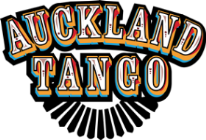Tango Mahi “Tanda of the Week” is by Ricardo Tanturi featuring Enrique Campos
Ricardo Tanturi took piano lessons from his brother as a teen, and from the age of 19 was playing professionally while studying to become a dentist.
In 1933 at the age of 28 he formed his own sextet “Los Indios” (“the Indians”), which performed in cinemas, played at milongas and recorded without particular acclaim.
In 1939 (a year or so after Juan D’Arienzo and Rodolfo Biagi had set the tango dance scene alight) Tanturi :
– expanded “Los Indios” to become the Orquesta Tipica Ricardo Tanturi,
– refined the repertoire and arrangements to focus on rhythmic tango dancing, and
– recruited vocalist Alberto Castillo whose real name was Alberto De Lucca.
Alberto was a charismatic young milonguero and an incredibly good singer who was studying to become a gynaecologist. In 1941 he graduated and set up consulting rooms at his parents’ house, and by then, he and the Tanturi orquesta had become very popular with regular daily radio performances and milonga gigs most nights.
From 1941 to 1943 their popularity grew even more with the release of a number of very successful recordings and by 1943 Alberto was having to limit his gynaecology consultations to mornings before rushing to perform live on the radio in the afternoons and at milongas in the evenings.
Through those years word gradually got out about Alberto’s double life and bookings by milongueras and other women for his consulting services reached such a high level that he was finding it problematic. In 1943 he chose to close his practice, end his medical career and left the Tanturi orquesta to pursue a career as a solo vocalist.
To replace him Tanturi recruited Enrique Campos (real name Enrique Troncone), who was already a successful vocalist performing under the stage name Eduardo Ruiz.
Up until Alberto’s exit, his charisma and vocals had been the distinguishing feature of the orquesta, which performed very few original compositions. A secondary evolving feature of the orquesta had been the adoption of some particular classic tango rhythmic phrases that were played in increasing numbers of the songs in the orquesta’s repertoire. Coinciding with Campos’s arrival the orquesta began to really emphasise and refine these, and this resulted in them becoming a recognisable signature for Tanturi music.
These rhythms can be found in each of the three Tanturi / Campos recordings I have chosen for this week’s Tanda of the Week, namely:
1943 “Una Emocion” (An emotion)
1943 “Que Bien Te Queda” (How well you’ve changed)
1944 “Recien” (Recent)
I can’t be sure about the reasons, but it is clear that very few maestros choose to adopt Tanturi music for their performances and workshop demo dances. Those who do, tend to either step only on the strong 1 and 3 beats for the signature syncopated phrases without acknowledging them in their choice of movements, or alternatively they pause for the duration of those phrases.
There are however, some really great insights in some Tanturi musicality clips on YouTube including:
– one of Helaine Treitman demonstrating the accents of “Una Emocion”:
– another of Austrian musicians / maestros Pablo Fernández Gómez and Ludmila Srnková demonstrating exercises useful for dancing to Tanturi music.
Below is a clip of Pancho Martinez Pey leading retired maestro Maria Nieves Rego, dancing to the Tanturi / Compas song “Oigo Tu Voz” at Club Malcolm:
___________________
Depending on the feedback I receive in the meantime, I might repeat this week’s tanda of the week songs next week, and preface them with an identification of some of the Tanturi signature rhythms, how they can be counted, and some ideas about what can be done to improve our understanding of the rhythms, dance them more musically, and overcome the challenges they can present.

